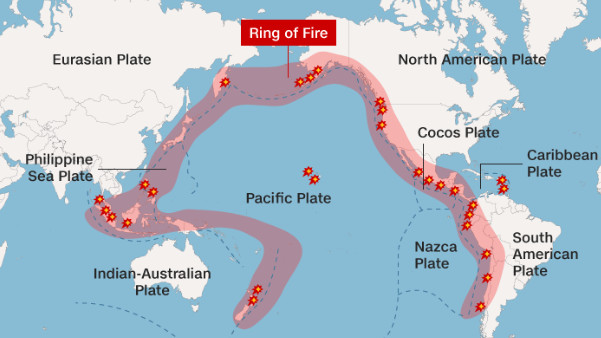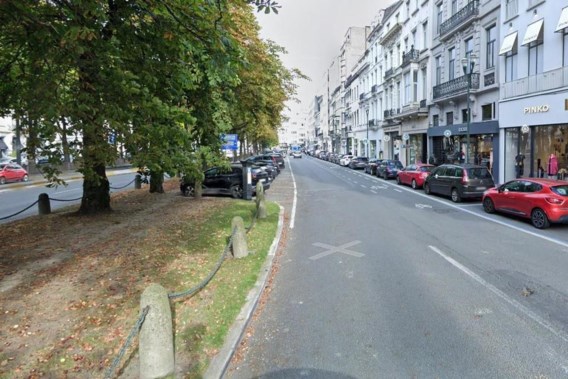The powerful 7.2-magnitude earthquake that rocked Taiwan and has so far killed seven people has caused widespread devastation in Hualien County with more than 700 injured and at least 77 trapped, bringing back the foreground the so-called “Ring of Fire” or “Fiery crown of the Pacific”.
The “Ring of Fire” (Ring of Fire) is located in the Pacific Ocean basin and along it are located some of the world’s most active volcanoes and a large number of earthquakes and volcanic eruptions occur as the tectonic plates are pushed together.
It includes 452 volcanoes and contains over 75% of the world’s active and inactive volcanoes. About 90% of the world’s earthquakes and 81% of the world’s largest earthquakes occur along the “Ring of Fire”. The next most seismic region (5-6% of earthquakes and 17% of the world’s largest earthquakes) is the Alpine orogenic system, which extends from Java and Sumatra through the Himalayas and the Mediterranean Sea to the Atlantic Ocean.
The “ring” stretches along an arc of 40,000 kilometers from the Pacific plate boundary, across smaller plates such as the Philippine Sea plate, to the Cocos and Nazca plates at the edge of the Pacific Ocean.
The people most at risk from volcanic eruptions and earthquakes live in countries along the “Ring of Fire,” including Chile, Japan, the west coast of the US, and other island nations, including the Solomon Islands, up the west coast of North and South America.
How was the Ring of Fire formed?
Tectonic plates are huge plates of the Earth’s crust that constantly move above the mantle, that is, the layer of solid and molten rock below the crust.
The “Ring of Fire” was formed as the oceanic plates slid under the continental plates.
Volcanoes along the “Ring of Fire” form when one plate is pushed beneath another in the mantle through a process called subduction.
Large earthquakes – which carry the risk of triggering tsunamis – also occur in subduction zones.
How volcanoes form and cause earthquakes
Volcanoes, CNN reports, are created when magma, or hot molten rock, rises through cracks in the Earth’s crust, causing pressure to build up. When tectonic plates pull or push against each other, the pressure is released, causing the magma to erupt as ash or lava. Once the lava cools, it forms a new crust.
Volcanoes form slowly over time as layers of crust build up after several eruptions.
Earthquakes represent the release of energy from the Earth’s interior, where a huge amount of heat is stored and causes the plates to move. When two plates move against each other and produce friction, energy is stored. When the energy is released, an earthquake is caused.
“It takes tens of thousands of years to build up the energy, but only a few seconds to release it,” said Hongfeng Yang, a seismologist at the Chinese University of Hong Kong.
Tectonic plates usually move on average a few centimeters each year, but when an earthquake strikes, they can move several meters per second.
Seismologists still cannot predict when or where earthquakes will occur or how big they will be.
Source: in.gr


